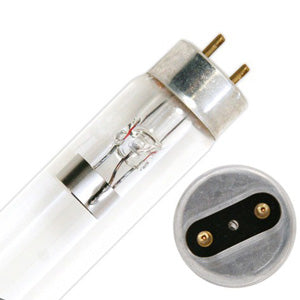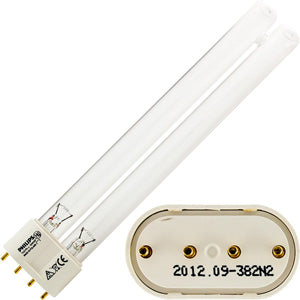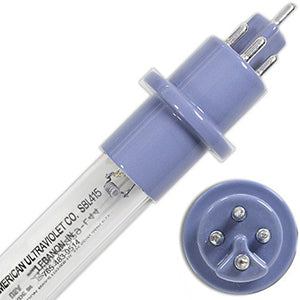Germicidal UVC Light Bulbs
Ultraviolet germicidal light bulbs are widely used as an air, surface, and water sanitizer. UV germicidal light destroys the ability of bacteria, viruses and other pathogens to multiply by deactivating their reproductive capabilities. Germicidal light includes the UV-C portion of the ultraviolet spectrum with wavelengths between 100nm and 280nm. The target wavelength for optimal germicidal light bulb effectiveness is 253.7nm which defines the germicidal category. For water sanitation, ultraviolet germicidal lamps also emit ozone at 185nm.
Warning: UVGI radiation is extremely harmful to skin and eyes.
How Does Ultraviolet Germicidal Light Sanitize Air and Water?
Ultraviolet germicidal light bulbs (UV-C) produce short wave radiation between 100nm and 280nm in the electromagnetic spectrum. These wavelenghts are lethal to bacteria, virus and other microorganisms. Specifically, UV-C light causes damage to the nucleic acid of microorganisms by forming covalent bonds between adjacent bases in the DNA. The formation of these bonds prevents the DNA from being released for replication. The pathogen cannot reproduce and dies.
A principal advantage of the ultraviolet germicidal light method for disinfecting is that it does not use chemicals or heat. It has proved to be a reliable method of sanitizing air and water.




















